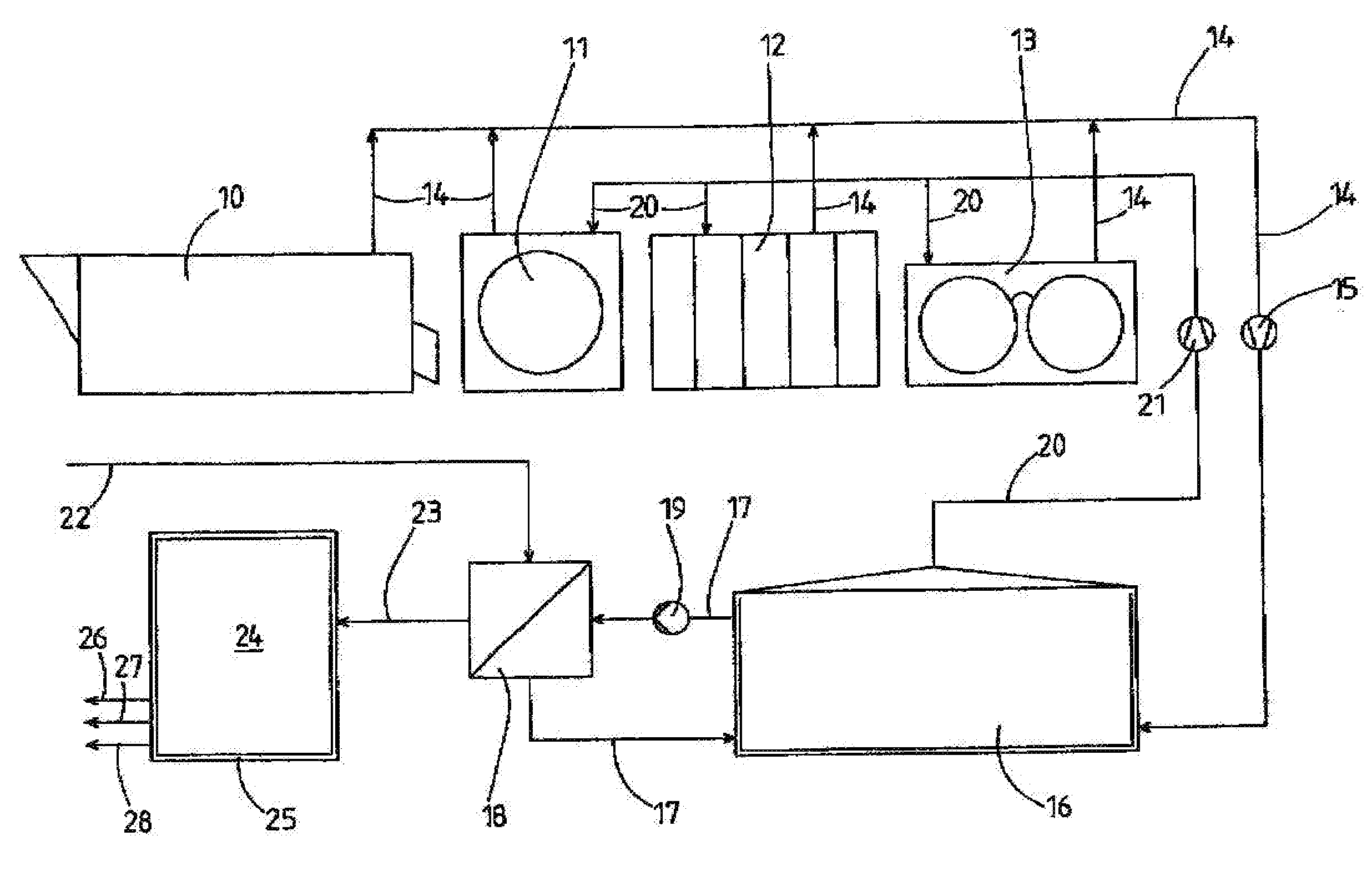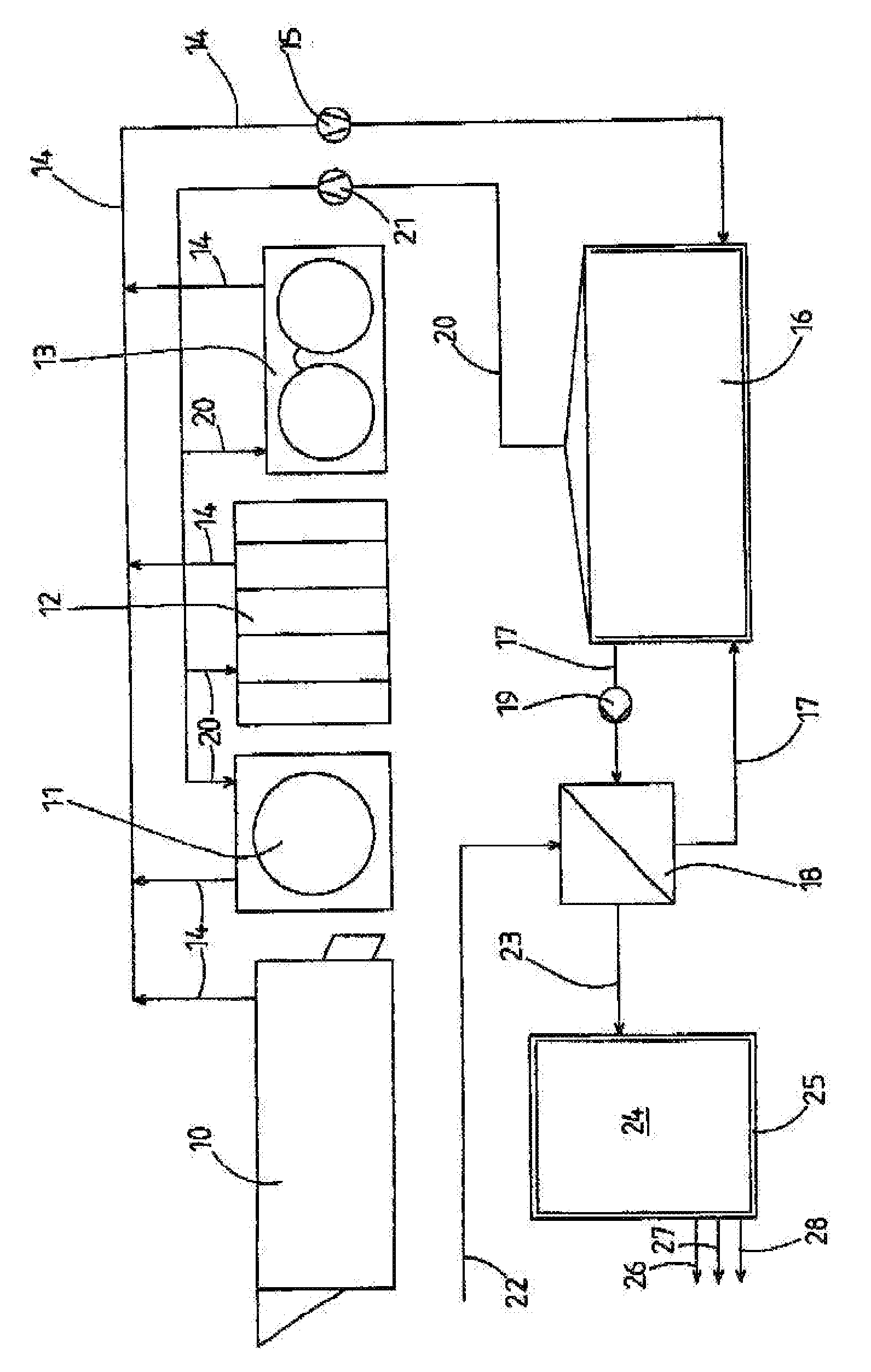Method for recovering heat energy released by laundry machines
a technology of heat energy and laundry machines, applied in the direction of washing machine appliances, dish washers, washing apparatus, etc., can solve the problems of large energy requirements of commercial laundries, and achieve the effect of reducing the energy requirements of laundry
- Summary
- Abstract
- Description
- Claims
- Application Information
AI Technical Summary
Benefits of technology
Problems solved by technology
Method used
Image
Examples
Embodiment Construction
[0022]The method illustrated here is employed to recover energy discharged by laundry machines, in particular heat energy, in such a manner that at least one portion of the energy can be reutilized in the operation of preferably laundry machines. The recovery of energy can be applied to all laundry machines used in commercial laundries which discharge unspent energy.
[0023]The drawing shows schematic representations of a washing machine, namely a tunnel washing machine 10, a dryer 11, a finisher 12 and a mangle 13. In these laundry machines—to which, however, the invention is not limited—a particularly large amount of heat energy accumulates, which is normally vented outside without being utilized. The energy discharged by the laundry machines takes the form of moist air, or gland steam. The gland steam still possesses a relatively high temperature that can be greater than 100 C. The object of the invention is therefore to recover at least part of the energy still contained in the gl...
PUM
 Login to View More
Login to View More Abstract
Description
Claims
Application Information
 Login to View More
Login to View More - R&D
- Intellectual Property
- Life Sciences
- Materials
- Tech Scout
- Unparalleled Data Quality
- Higher Quality Content
- 60% Fewer Hallucinations
Browse by: Latest US Patents, China's latest patents, Technical Efficacy Thesaurus, Application Domain, Technology Topic, Popular Technical Reports.
© 2025 PatSnap. All rights reserved.Legal|Privacy policy|Modern Slavery Act Transparency Statement|Sitemap|About US| Contact US: help@patsnap.com


